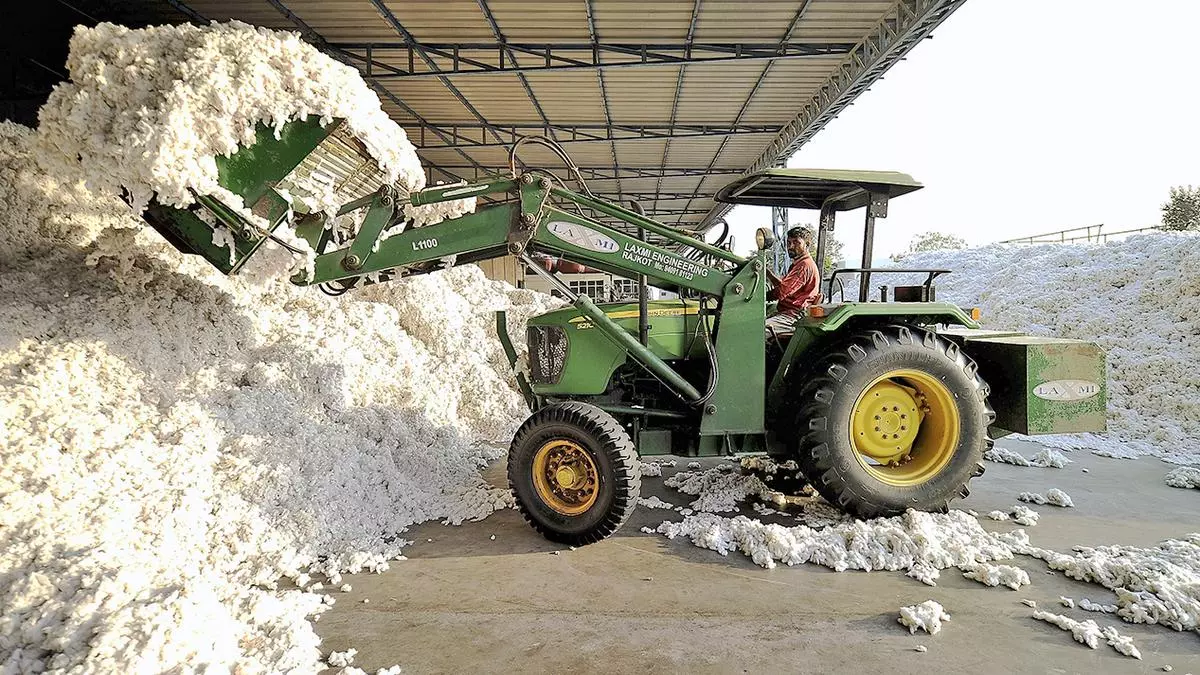India’s cotton support price hike may throw new challenges to textile industry
The Indian government has increased the minimum support price (MSP) for cotton by ₹501 to ₹7,121 a quintal, offering crucial support to growers but the hike will throw new challenges for the textile industry in general, say industry and trade officials.
While fixing the MSP for medium staple cotton at ₹7,121 from ₹6,620, it raised the support price for long stable cotton to ₹7,521 from ₹7,020. “The recent hike in the MSP for cotton has created a complex situation. Over the past four years, the MSP has increased from ₹6,025 per quintal to ₹7,521. This rise is mainly due to higher farming costs and lower yields,” said Ramanuj Das Boob, a sourcing agent for multinationals based in Raichur, Karnataka. He is also vice-president of the All-India Cotton Brokers Association.
Opportunities
The hike offers opportunities and challenges. In the short term, there will be an impact on price, which will react to the increase in MSP. “But it could be limited because of global demand being lukewarm,” said Das Boob.
Following the MSP hike, the Cotton Corporation of India (CCI) increased its rates on Thursday offering the natural fibre by ₹200 per candy (356 kg) and selling 80,000 bales (170 kg). “On Friday again, it increased the prices by ₹400,” he said.
“Cotton sowing has been reported to be lower till now. However, the MSP hike will encourage farmers to increase the crop’s acreage. Overall, there is likely to be a marginal drop in the area under cotton,” said Anand Popat, a Rajkot-based trader in cotton, yarn and cotton waste.
Rise in acreage?
The trade and industry could initially feel uneasy but soon the mindset will change and adapt to the situation, he said. Das Boob concurred with the view saying, “The higher MSP might encourage farmers to plant more cotton, despite earlier expectations of a decline.”
While sowing is almost complete in Punjab, Haryana and Rajasthan, there could be some gains in Gujarat, Maharashtra, Karnataka, Telangana, Andhra Pradesh and Tamil Nadu.
MSP is one way of supporting farmers from the policy-making point of view, said the Indian Texpreneurs Federation convenor Prabhu Dhamodharan. “At the same time, increasing the yield is the best and permanent way forward to address this issue. with such effort, the Indian textile and apparel sector will get raw material security at competitive prices,” he said.
Floor price set?
Parallelly, efforts must be made to improve the yield within a specific timeframe. “1,000 kg per hectare is the best way forward (for increasing the yield)”, the ITF convenor said. Currently, India’s per-hectare cotton yield is 447 kg.
Das Boob said farmers might hold back their produce (kapas or unprocessed cotton) until the new season, reducing the immediate supply.
With speculation pinning down cotton futures on the InterContinental Exchange, New York, domestic prices may not see much increase. “However, they may not drop below ₹60,000 per candy once the season begins in October,” he said.
On Friday, Shankar-6 cotton, the benchmark for exports, was quoted at ₹56,300 a candy. On the ICE, July futures ended at 70.85 US cents a pound (₹46,830 a candy). On MCX, July contracts were quoted on Friday at ₹57,890 a candy, gaining ₹100.
‘Scrap import duty’
“Policymakers now need to seriously consider the removal of import duty in the coming cotton year to bring a balance in the trade,” said Dhamodharan. India imposes an 11 per cent duty on shipments into the country.
Das Boob said with global cotton prices ruling low and a large new crop expected, cotton imports into the country may increase.
Popat said if cotton prices decline below the MSP level in the new season starting on October 1, the CCI might step in to procure. “What CCI procures may not come to the market and prices may rise as a result,” he said.
CCI operations
The CCI may need to expand its operations to support the higher MSP, acting as a buffer to ensure a steady supply for mills, said the All-India Cotton Brokers Association vice-president.
World apparel trade works in a hyper-competitive environment and “sharp pricing” is necessary to improve India’s market share in finished products. “Any artificial deviation from international prices at the raw material stage will erode our competitiveness in apparel exports,” said the ITF convenor.
Popat said yarn and apparel manufacturers could look towards a corresponding rise in the prices of their products. “The market goes by sentiment and it will begin accepting the revised prices,” he said.
Das Boob and Popat said cotton exports may be affected as India could be out-priced in the global market. Earlier this week, the Cotton Association of India pegged exports for the current season to September 68 per cent higher at 26 lakh bales from 15.5 lakh bales last season.
He said spinners and ginners may increase their purchases in case the supply of cotton declines.
Shift to other fibres
The cotton sourcing agent from Raichur said textile mills may switch over to man-made fibres, which are currently in higher demand, potentially reducing cotton consumption.
Dhamodaran said alternate fibres are penetrating rapidly into the fashion world and taking away the market share of cotton every year due to its cost advantages combined with improved functional aspects of those fibres.
Das Boob said the textile industry may face higher costs that could be passed on to consumers, thereby reducing demand for cotton products.
He called for long-term strategies to ensure the MSP hike leads to sustainable growth in the cotton sector. “A balanced approach is essential to maximise the benefits of the MSP while minimising its negative impacts on the economy and the cotton value chain,” said Das Boob.
ITF’s Dhamodaran said improving the yield will protect the farmers’ income, cotton share in fashion and Indian Apparel exports growth.
